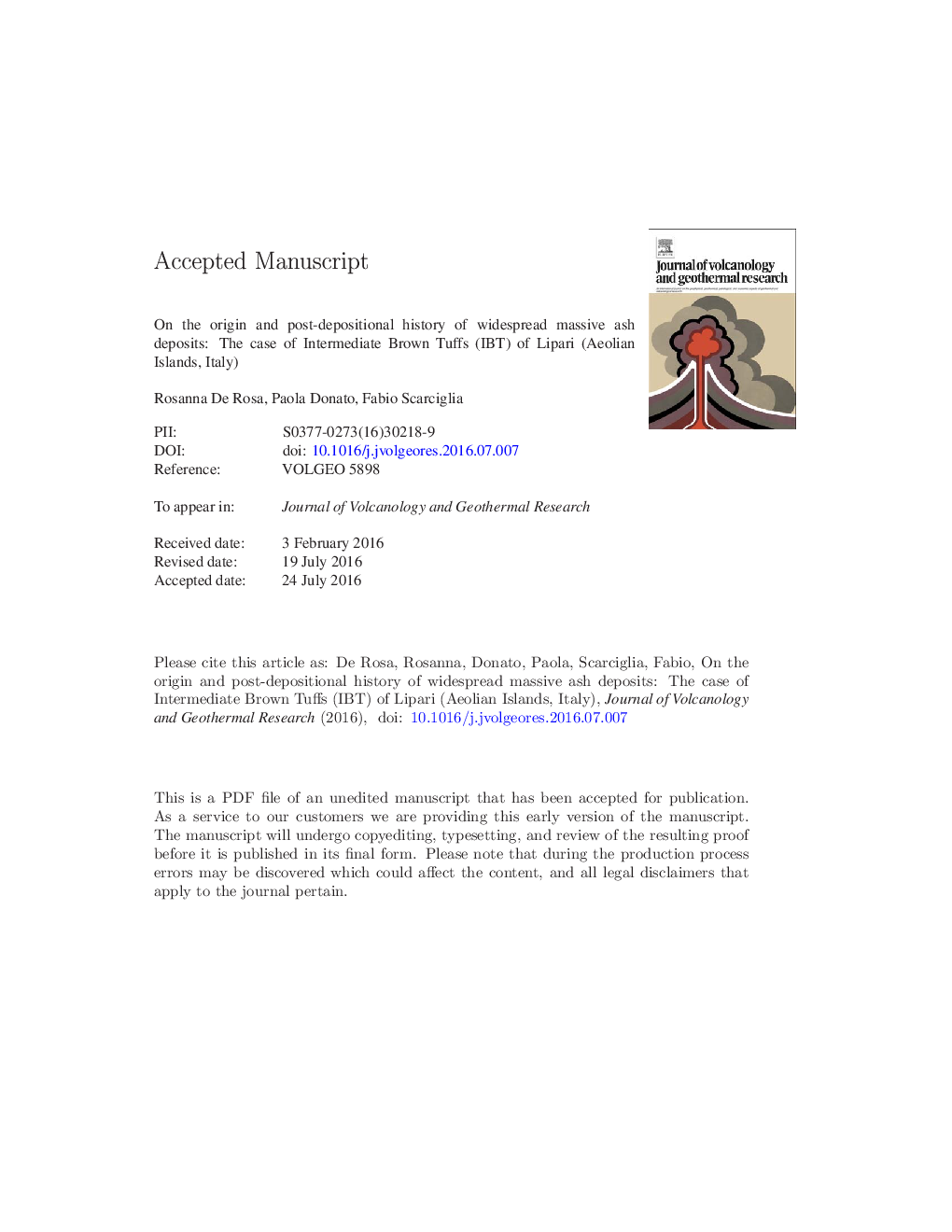| Article ID | Journal | Published Year | Pages | File Type |
|---|---|---|---|---|
| 5783765 | Journal of Volcanology and Geothermal Research | 2016 | 48 Pages |
Abstract
The use of a multidisciplinary approach that integrates textural, petrological and pedological methods, allows us to discriminate between syn-eruptive and post-depositional features. The deposits are dominated by uncrystallised blocky glass fragments of homogeneous shoshonitic composition, confirming a provenance from hydromagmatic eruptions on the island of Vulcano. Many glass fragments are surrounded by a coating separated by a thin void of syn-eruptive origin due to alteration by aggressive acid gases in the eruptive cloud. The lack of this coating in the northern part of Lipari can be explained as a progressive dispersion of the gases far from the vent and/or to post-depositional processes. The degree of soil development significantly increases from south (soil profiles P1 and P2 at Valle Muria) to north (P3 and P4, at Madoro and Chiesa Vecchia sites, respectively) as a response to a decrease in slope steepness, which has brought about a progressive deepening of the pedogenetic front on gentler landforms and conversely its rejuvenation on steep slopes. The relatively poor to moderate degree of pedogenic evolution of the studied IBT unit is consistent with its emplacement during part of the last glacial period.
Related Topics
Physical Sciences and Engineering
Earth and Planetary Sciences
Geochemistry and Petrology
Authors
Rosanna De Rosa, Paola Donato, Fabio Scarciglia,
